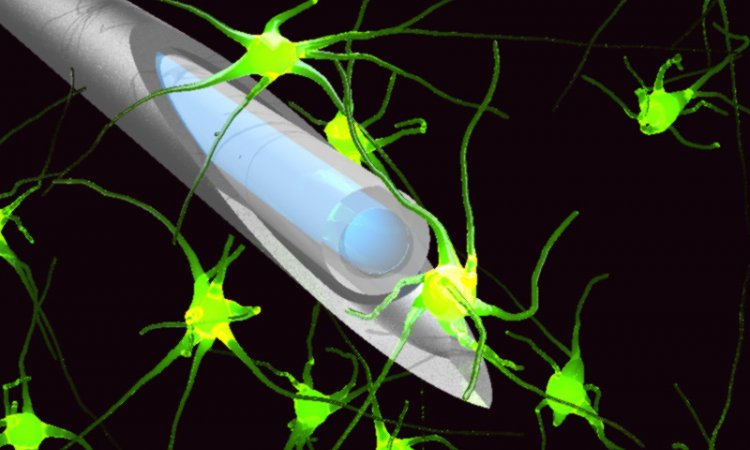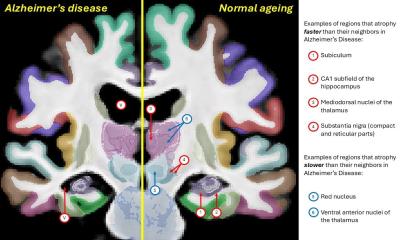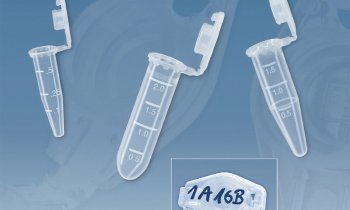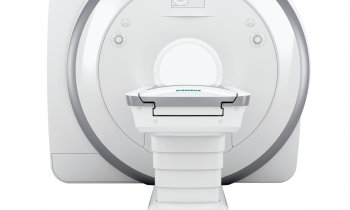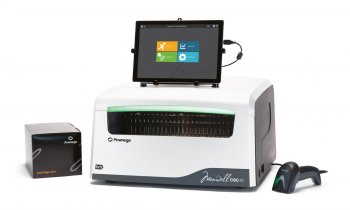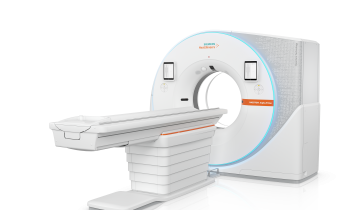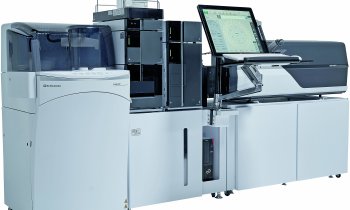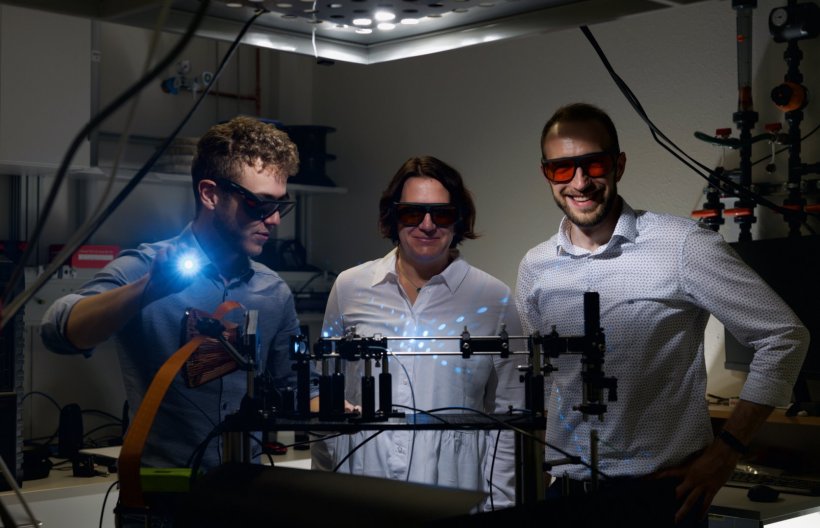
Image source: Sven Döring/ Leibniz-IPHT
News • Research project NEUROGATE
Holographic endoscope illuminates the brain
A European research team from Germany, the Czech Republic and Belgium is developing an innovative imaging technology to visualize neuronal processes in living organisms with high precision.
The NEUROGATE project is working on a holographic endoscope that peers deep into the brain through an ultra-thin optical fiber – minimally invasive and with subcellular resolution. The European Innovation Council (EIC) is funding the development of this technology with €2.5 million to test its applicability to biomedical research.
The holographic endoscope is based on a multimode optical fiber thinner than a human hair. It enables long-term observation of neuronal circuits in deep brain regions – even in freely moving organisms. This opens up new perspectives for the study of neurological diseases such as Alzheimer’s or epilepsy and could contribute to the development of innovative diagnostic and therapeutic approaches.
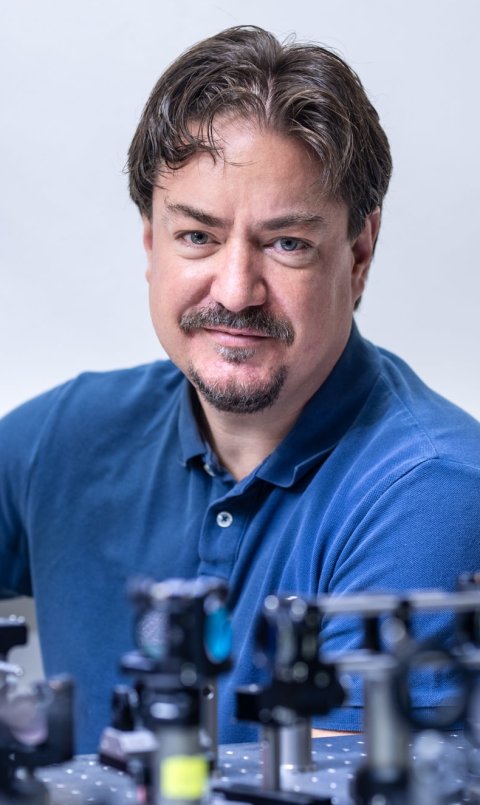
Image source: Jana Plavec/AV ČR
“This technology marks a turning point in neuroscience,” says Prof. Dr. Tomáš Čižmár, research department head at the Leibniz Institute of Photonic Technology (Leibniz IPHT) and professor at Friedrich Schiller University Jena. “With NEUROGATE, we are taking it to the next level to study neuronal activity under natural conditions with unprecedented precision. These findings could significantly expand our understanding of neurological diseases.”
Since 2017, Čižmár, has been developing the technology of holographic endoscopes simultaneously at Leibniz IPHT and at the Institute of Scientific Instruments of the Czech Academy of Sciences (ISI, Brno). In 2024, this work has brought two important awards: the Czech Minister of Education’s Prize and the Life Sciences award of the European Microscopy Society.
A key partner in the project is the Jena-based start-up DeepEn, which is driving the commercialization of the technology. DeepEn has been founded by the members of Čižmár’s group at Leibniz IPHT and has spun off from the institute in 2024. The company won the special prize for young companies at the Thuringian Innovation Award in the same year. “Our goal is to translate scientific breakthroughs into marketable applications,” explains Dr. Sergey Turtaev, CEO of DeepEn. “Holographic endoscopy has the potential to revolutionize biomedical research – and NEUROGATE brings us one step closer to that goal.”
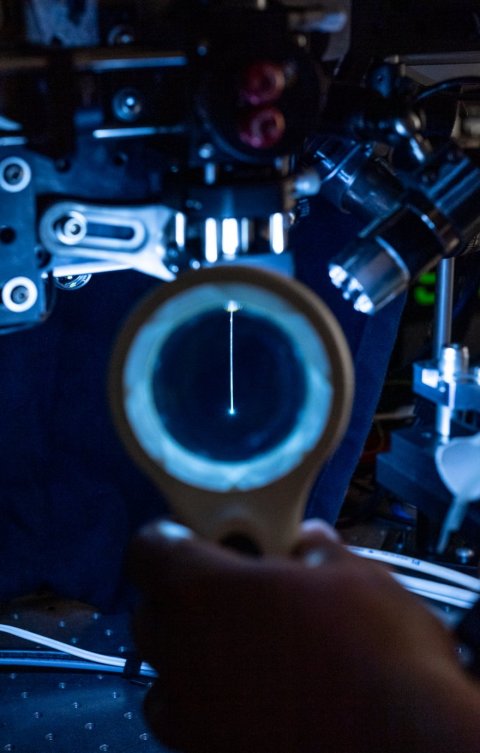
Image source: Jana Plavec/AV ČR
In collaboration with Leibniz IPHT and DeepEn, two international partners are involved in NEUROGATE: the Institute of Scientific Instruments of the Czech Academy of Sciences (ISI) in Brno and Neuro-Electronics Research Flanders (NERF) in Belgium. This interdisciplinary research center for neurotechnology is supported by imec, the life sciences institute VIB, and KU Leuven.
Dr. Hana Uhlirova, who is taking the lead on ISI’s activities points out: “This project allows us to test the technology under real conditions and make significant advances in neuroscience.” Sebastian Haesler of NERF adds: “We’re excited to apply our expertise in advancing neurotechnology applications to better understand the brain and develop new therapeutic strategies for neurological diseases.”
NEUROGATE aims to bring the technology to Technology Readiness Level 6 (TRL6) – validation under realistic conditions. This is a crucial step towards its use in biomedical research and later clinical applications. The project builds on Čižmár’s successful predecessor ERC Proof-of-Concept grants at IPHT and ISI. While WOKEGATE (Leibniz IPHT) enabled the development of ultra-fine endoscopes for the study of neuronal networks, STROKEGATE (ISI) demonstrated how this technology can be used to analyze the effects of strokes on the brain.
According to the consortium, the market for holographic endoscopes is estimated at more than €850 million. This technology could transform the diagnosis and treatment of neurological diseases. “With NEUROGATE, we are demonstrating how basic research and technology transfer can be combined to develop solutions for socially relevant challenges,” says Prof. Čižmár.
Source: Leibniz Institute of Photonic Technology
02.02.2025



